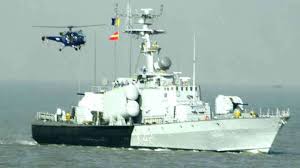The seventh and final satellite of the Indian Regional Navigation Satellite System, the IRNSS 1G, was launched into a sub geosynchronous transfer orbit with a perigree (nearest point to earth) of 284 km and an apogee (farthest point to earth) of 20,657 km. The satellite was launched on board the Polar Satellite Launch Vehicle (PSLV), which took off from the Sriharikota launch pad.
With this launch, the IRNSS constellation of seven satellites is now complete.
- This will allow the Indian Space Research Organisation (ISRO) to focus on the process of designing front end chips which will receive the navigational signals sent out by the satellites.
- The system will be similar to the Global Positioning System (GPS) operated by the United States with 24 satellites and the Glonass, Galileo and BeiDou systems of Russia, Europe and China respectively.
- All satellites will undergo stabilisation testing and verification of their performance over the next few months before being pushed into use.
- An area of 1,500 km from Indian boundaries will be covered under the navigational system.
- The Prime Minister invited other countries to make use of this system as well. “We have seven neighbours who rely on technology provided by other countries.




